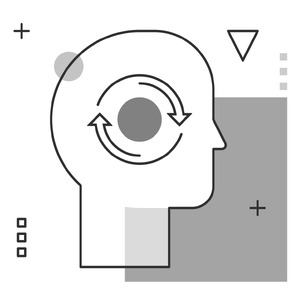Certificate 2: Chiropractic educational philosophy
To earn this Digital Certificate you must complete this set of five (5) Digital Badges and submit the Summative Assessment; your Digital Certificate will be 'Chiropractic Educational philosophy'.
Each Digital Badge is allocated a volume of learning of about 45 hours, a total of about 225 learning hours for this Digital Certificate. This is about the same as expected within a full-time university course.
Assessment
Your grade for this certificate is calculated as follows:
Each of 5 micro-credentials can earn up to 10 points, total 50 towards your final certificate grade, and
The summative assessment can earn up to 50 points towards your certificate grade.
You can prepare your responses in any word-processor application then paste your response in the space given, then submit.
The passing grade is 50% or above.
Ignorant unis have forgotten their rich history
HENRY ERGAS
"We do not believe, nor understand, how our campus can be a place where people are less free to speak than they are in the wider world," wrote Mark Scott, vicechancellor of the University of Sydney, on these pages earlier this week.
Those words sound unimpeachable.
Yet far from justifying, as Scott seeks to do, a relatively permissive approach to the current protests, they betray a deep misunderstanding of the role and responsibilities of universities - and notably about the difference between freedom of expression on the one hand and academic freedom on the other.
Nothing more starkly highlights that difference than the contradiction between Scott's statement and his own university's case against former lecturer Tim Anderson in the Federal Court.
Anderson had, among other things, posted an image of a swastika superimposed over an Israeli flag on his social media account.
The image is despicable; but posting it is plainly not illegal.
However, the university argued that the post breached Anderson's obligation to meet the "highest ethical, professional and legal standards" in research, teaching and public presentation.
Anderson, the Federal Court ruled, had to comply with thosestandards, even fi complying curtailed freedoms he might enjoy in a non-academic setting.
That the court reached that view is unsurprising: the university is not the Speakers' Corner in Hyde Park. It is an organisation that has a purpose - the purpose of advancing and disseminating knowledge. And it is entitled to regulate the behaviour of its staff and students so that its purpose is respected and pursued.
Edward Shils put it well in a 1967 report that formed the basis for the University of Chicago's famous statement on academic freedom.
"Cranks and demagogues," he noted, "enjoy the right of freedom of expression." But from the moment they act as members of the university, "academic freedom does not protect their right to make arbitrary assertions without regard to the evidence, methodically and critically assessed". "Intellectual freedom," he concluded, "has traditionally entailed no institutional obligations; academic freedom does entail such obligations" - including, importantly, that of "maintaining and protecting the internal order in which academic activities can be effectively performed".
Shils's insights are hardly new: it was obvious from the moment the first universities were established that academic institutions had a right and duty to impose standards. Thus, the earliest charters, granted in the 13th century, vested them with a general character as a "university" - which simply meant a corporate body, voluntarily composed of its members - and a specific "telos" or object for which those members had freely associated: to be a "a university of teachers and scholars", a community of masters and teachers.
The great philosopher Abelard may have been entirely truthful when he said he taught only from "desire for money and praise", greed and ambition; but already in 1215, the University of Paris adopted binding regulations to "reform and improve" its teaching and learning.
Those regulations' stated aim was to assure "the tranquility of the schools", the peace of the university, while promoting "love of knowledge", respect for science, by making diligence, broad learning, and conceptual clarity its members' overriding duty.
The Sorbonne's regulations set a template universities throughout
Europe chose to adopt. In doing so, they were benefiting from one of the Middle Ages' most important innovations: the development of what centuries later became the freedom of association.
That notion, which found no counterpart outside the West, was reflected in a proliferation of selfregulating corporate bodies that ranged from chartered cities to guilds and commercial partnerships.
On a conservative estimate, late medieval England contained thirty thousand voluntary societies, each with internal regulations that reflected its telos. And the number increased dramatically as the Protestant Reformation unleashed a wave of associative activity.
The Reformation also transformed the universities that, after an initial burst of vigour, had sunk into torpor. Edward Gibbon, who went to Oxford in 1753, was scarcely alone in finding his 14 months there "the most idle and unprofitable of my whole life", and in condemning the complaisant idleness of its dons, "steeped in port and prejudice".
But in Lutheran Germany, a new research-oriented model of the university was taking shape, injecting a dynamism that reverberated throughout the West.
Epitomised by the University of Berlin, established in 1810, its underlying principle, as articulated by its founder, Wilhelm von Humboldt, was that the quest for knowledge had to be seen as the perpetual probing of an endless frontier, "something not yet achieved and that can never be completely achieved".
Teaching was no longer mere transmission; its emphasis was on training young people to be "searchers for knowledge". The academic freedoms - including freedom from the shackles of orthodoxy - had to be correspondingly greater, as did the universities' autonomy; but their members' duties had to be greater too, especially in terms of intellectual integrity and mutual respect.
It followed, wrote Humboldt, that the university environment had to be "free of disruption and empty chatter", creating and preserving an environment conducive to the single-minded pursuit of its goals. Its freedoms therefore needed to be buttressed by rules, crafted by the university itself, that reflected its own "sphere and duties" - and most of all, that entrenched "love of knowledge" and assured the "the tranquility of the schools".
None of that implies that selfregulation is without risks. As Shils observed, there are few breaches of academic freedom that have not been championed by the universities themselves.
But the fact that power can be abused is an argument for safeguards, not for tolerating anarchy.
As well as effective appeals mechanisms, those safeguards should include far clearer regulations than our universities currently have. And they should also include greater competition between universities, which would encourage them to focus on merit and provide options for the faculty and students they unjustly spurn.
Ultimately, however, the only sure safeguard lies in our universities' understanding of, and commitment to, their purpose. But the shortfalls are greater in that respect than they have ever been.
Who, for example, could have imagined that Sydney, Australia's oldest university, when asked by the court in the Anderson proceedings to explain exactly what was meant by meeting "the highest ethical, professional and legal standards", would simply refuse to answer, showing itself incapable of addressing a question that goes to the very heart of its existence? And who could have imagined that the leaders of our most prestigious universities, instead of having the moral courage to decide for themselves whether chants of "from the river to the sea" breached their regulations, would have to write to the Attorney-General seeking his direction? That, in the end, is the tragedy.
The universities, and our intellectual class more broadly, have lost the most important of abilities, the one they, above all, should cherish and cultivate: the ability to set one's own course. When it goes, real freedom, freedom in its most meaningful sense, goes too.
Ref: Henry Ergas. Ignorant unis have forgotten their rich history. The Weekend Australian. 2024;May 24. https://www.theaustralian.com.au/commentary/ignorant-unis-have-forgotten-their-rich-history/news-story/5420130a155ed91ea780d2fd6489c4fe
Logic, science, belief, and politics
Enter your content...
Objective based education: What, why, & how
Enter your content...
Institutional longevity & changing technology
Enter your content...
Values, truth, and your classroom presence
Enter your content...
Formative self-assurance
Explain what you have learned and identify and describe the strategies you will apply to translate this learning into your practice as an academic.
Give the pros and cons of several known educational philosophies. Argue for the one or two you think could be useful in the education of chiropractors.
Click 'submit' to receive a grading to indicate your attainment which will become your grade for his course. Available grades are: 'On song' A(9, 10); 'solid' B' (7, 8); 'acceptable' C (5, 6); 'passable' D (4); 'needs more work' F (3 or less).
You must read beyond what is given here, and cite at least 2 or 3 relevant papers in your summary.
Specific responsibilities
Enter your content...
Andragogy or pedagogy
Enter your content...
Capabilities or competencies
Enter your content...
Accountabilities
Turn up on time, know every student by name, lead the learning of each individual, assess them fairly, submit your reports on time
Heading 5
Enter your content...
Formative self-assurance
Explain what you have learned and identify and describe the strategies you will apply to translate this learning into your practice as an academic.
In particular, how would you enact your two ideas of a philosophy of education? What outcomes would you use to measure your success or otherwise?
Click 'submit' to receive a grading to indicate your attainment which will become your grade for his course. Available grades are: 'On song' A(9, 10); 'solid' B' (7, 8); 'acceptable' C (5, 6); 'passable' D (4); 'needs more work' F (3 or less).
You must read beyond what is given here, and cite at least 2 or 3 relevant papers in your summary.
Heading 1
Enter your content...
Heading 2
Enter your content...
Heading 3
Enter your content...
Heading 4
Enter your content...
Heading 5
Enter your content...
Formative self-assurance
Explain what you have learned and identify and describe the strategies you will apply to translate this learning into your practice as an academic.
In particular, explain how you will remain receptive and supportive of the approaches of your colleagues when they differ to your own. How will you handle conflict?
Click 'submit' to receive a grading to indicate your attainment which will become your grade for his course. Available grades are: 'On song' A(9, 10); 'solid' B' (7, 8); 'acceptable' C (5, 6); 'passable' D (4); 'needs more work' F (3 or less).
You must read beyond what is given here, and cite at least 2 or 3 relevant papers in your summary.
Approved, delivered, and grey
Enter your content...
History of the chiropractic curriculum
Enter your content...
Keeping the curriculum alive
Enter your content...
Heading 4
Enter your content...
Heading 5
Enter your content...
Formative self-assurance
Explain what you have learned and identify and describe the strategies you will apply to translate this learning into your practice as an academic.
We are interested to learn of the guard-rails you will put in place in your own work to stay within the lane of the approved curriculum. Conversely, how will you address the confusion from any grey curriculum?
Click 'submit' to receive a grading to indicate your attainment which will become your grade for his course. Available grades are: 'On song' A(9, 10); 'solid' B' (7, 8); 'acceptable' C (5, 6); 'passable' D (4); 'needs more work' F (3 or less).
You must read beyond what is given here, and cite at least 2 or 3 relevant papers in your summary.
Purpose and history
Enter your content...
Philosophy of the curriculum
Enter your content...
Philosophy of the taught Chiropractic
Enter your content...
Heading 4
Enter your content...
Heading 5
Enter your content...
Formative self-assurance
Explain what you have learned and identify and describe the strategies you will apply to translate this learning into your practice as an academic.
We are interested to see what you identify as strengths, weakenesses, and opportunities of the Transnational curriculum approach.
Click 'submit' to receive a grading to indicate your attainment which will become your grade for his course. Available grades are: 'On song' A(9, 10); 'solid' B' (7, 8); 'acceptable' C (5, 6); 'passable' D (4); 'needs more work' F (3 or less).
You must read beyond what is given here, and cite at least 2 or 3 relevant papers in your summary.
The academic mindset - Certificate

Summative assessment for this Certificate
Using as few or as many words as you feel you need, provide an interpretative reflection on your learning in this course. You may argue for or against any or all points taken from your readings. There is no technical word limit.
Be sure to identify and describe the strategies you will apply to translate this learning into your practice as an academic.
Click 'submit' to receive a grading to indicate your attainment which will become your grade for his course.
This task can earn you up to 50% of your grade for this course. This 'reflection' will be graded as: 'On song' A(41 - 50); 'solid' B' (31 - 40); 'acceptable' C (21 - 30); 'passable' D (11 - 20); 'needs more work' F (10 or less).











